VMware CEO Pat Gelsinger On Rapid Growth In Non-VSphere Products, How Partnerships With Competitors Make Sense And Why Running Containers Without VMs Is 'A Stupid Idea'
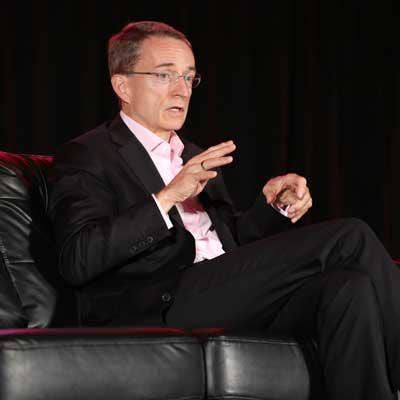
Gelsinger Takes Center Stage
VMware CEO Pat Gelsinger Tuesday stepped into the spotlight at the 2017 Best of Breed Conference to talk about the company's evolution beyond its foundational VSphere virtualization technology into a broader behemoth with a shiny new multi-cloud strategy built on numerous key partnerships.
"That now 50 percent of the business is non-VSphere says maybe we're not entirely done writing the second act, but we are well on our way, and our accelerated growth rates clearly demonstrate that," Gelsinger said during an on-stage interview with Channel Company CEO Robert Faletra.
Gelsinger spoke passionately the need for VMware to find a way to work with companies it considers rivals because that's what customers want.
"My promise to everybody here in the audience is if you need us to partner with anybody, we will," Gelsinger said to applause from the solution providers in the audience.
He shot down the notion that containers cut down on the need for virtual machines, arguing that the two technologies solve a different set of complementary problems.
"I need to build a specialized infrastructure just to run the containers and then they connect to everything that's non-containerized today? That's stupid," he said.
The interview also touched on the influence of Gelsinger's mentor, former Intel CEO Andy Grove, and how the lessons he learned influence the way he runs VMware today. Edited excerpts of the conversation follow.
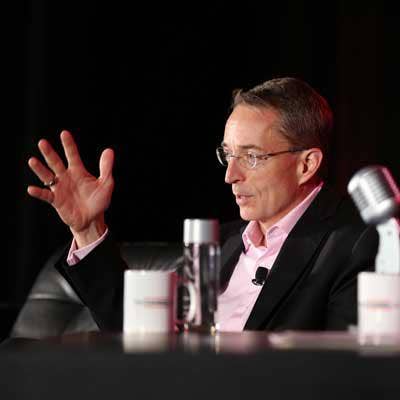
This past quarter all of the other products together drove more revenue combined than VSphere. What does that say about the company now?
Let me tell you just a little story. I was at a dinner meeting with investors about four years ago where one analyst asks a question but he says, 'Pat, I wanted you to know that you're my third-largest holding in my portfolio -- so a buy-side guy -- so I believe I you, I believe in your strategy.' I said, 'But if you really believed in me, I'd be your No. 1 holding, not your No. 3 holding.' And then he came back and he said the following. He said, 'Very few software companies have a successful second act, and that has just stuck in my mind ever since then, that fundamentally my tenure at VMware is to build the second act, that the second act for VMware that is greater than the first act, building and leveraging that foundation but becoming much, much more for our customers and or partners. And that metric that now 50 percent of the business is non-VSphere says maybe we're not entirely done writing the second act but we are well on our way and our accelerated growth rates clearly demonstrate that.
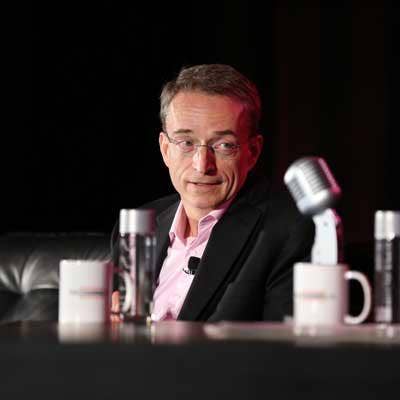
What do your growth rates look like now for some of those other product lines?
VSAN is greater than 150 percent, NSX is greater than 40 percent growth rate with greater than a $1 billion run rate, end-user computing was well over 20 percent last quarter, our cloud business was over 30 percent last quarter, so all of those are clearly demonstrating they're now at scale, they're growing rapidly and, boy, we want to do a whole lot more with all of you partners in the room. We're deeply grateful for what you've done with us. You represent us 80 percent to 90 percent of the time. You are our face to a lot of customers. With that, your success is our success, and vice versa. I just want you to know, this is the kind of company you work with, the values of our company. We're committed to continue to expand and innovate and ultimately to make it so the most successful thing you do is when you're working with VMware.
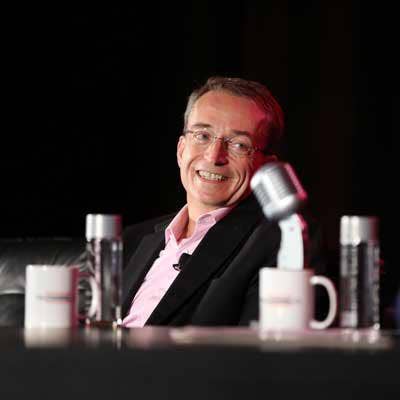
Let's talk about Docker for a bit. Do containers reduce the need for virtualized machines?
That's far from the truth. We've argued this for a while, that ultimately the VM is the best way to deliver a container. The VM solves infrastructure, security and management problems, containers solve application, lifecycle and deployment problems. Those are different problems. If you're the Docker guy, and I understand [Docker CEO] Steve [Singh] was here earlier, he'll say, 'why run those containers on VMs? Just run them on bare metal.' What a stupid idea. Let's give you facts. Almost every enterprise deployment of containers is running them in VMs. Why? Because it works. It's scalable, and you don't just do containerization of new apps, they almost always interact with existing apps that are already virtualized. I need to build a specialized infrastructure just to run the containers and then they connect to everything that's non-containerized today? That's stupid.
Here's another data point. Name the one company that has more container expertise than anybody else on the planet. Google. They run 100 percent of their containers in VMs. Why is that? Because they're solving different problems.
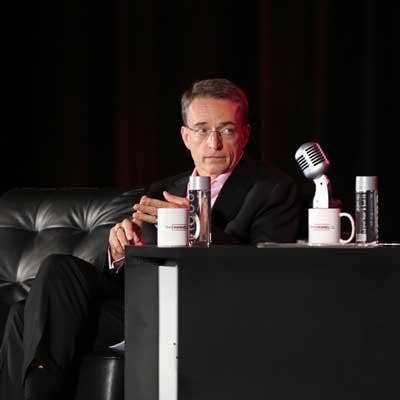
What's the benefit of using VMs and containers together?
Trying to over-use the container thing to solve infrastructure problems means you have to rebuild everything we've done in the networking space, security space, deployment, management, automation and so on to be able to execute a container environment. But why am I rebuilding that? It's already done. It's already solved. Our strategy is to bring these two things together. That's what we've just announced with Google and Pivotal with PKS.
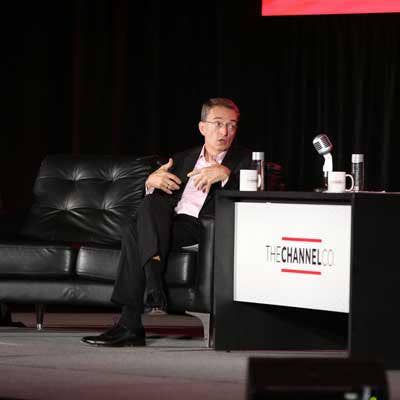
Should every partner get into containers? How big is the opportunity here?
Let's [quantify] this for a second. At this point, there are about 110 million workloads. VMware owns over half of those. If you add up all the cloud-delivered workflows, all of the on-premise, SaaS, it's on the order of 110 million, 120 million workloads worldwide. For any of you who are delivering VSphere to customers, we deliver through VSphere a bit over half of those. And in terms of enterprise workloads, we do around 80 percent. The expectation is that a containerized world will be over 10x that, and the CAGR of workloads is about 10 percent. So if you do some quick math, 10 years from now we'll have over 2 billion containers. That's the market opportunity, so it's a very, very large view of workloads, workload opportunities, microservices opportunities. Remember, all of those containers, they need to get networked, they need to get managed, they need to get deployed, so there's a very large set of extensions of what we do today. A lot of the container world will be driven by application-centric decision-making, because they'll be deciding more of how containers get built, but we also have to from the infrastructure side stand up to say how will they get run, and that's really our opportunity, so I think it's large.
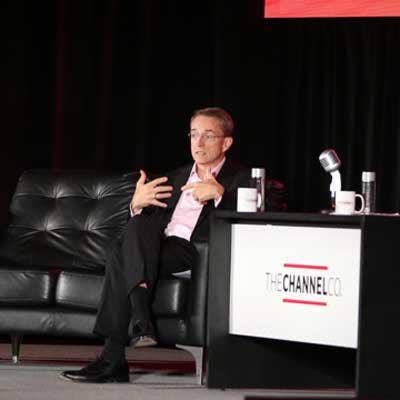
How will partners play in that opportunity?
Most partners will find that they will play by extending what they currently do into that space. If you're a storage guy, how are you going to put data into a containerized world? If you're a networking person, how do you extend networking into a containerized world, security into a containerized world? Every one of those will have their natural corollary.
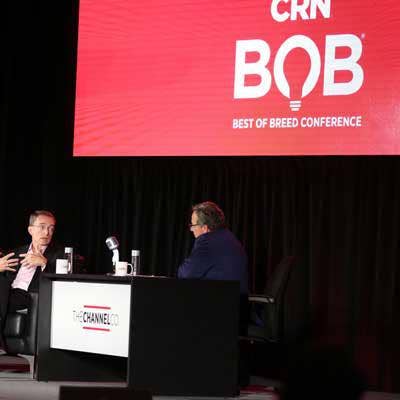
Who's on your list of competitors that you try to rally the troops against?
Our biggest competitor -- past, present and I think future -- is Microsoft. If you look down the list of things VMware does, if you look down the list of things Microsoft does, we overlap more than anyplace else, by far. But even with Microwsoft we're doing more cooperation. We just announced Horizon as a service. I'm running our VDI service on top of Azure. So we're finding even there that there's more cooperation, even as fundamentally I think of them as a competitor. Almost everybody else in the industry ends up being some level of partner. On NSX, I compete with Cisco, they have ACI, but even there, well over half of NSX runs on Cisco gear, so they even begrudgingly admit that yes, NSX is adding more value to our customers so we're building NSX and ACI integrations.
Docker as a company, they're not particularly potent in the industry today. Docker as a container format we're embracing aggressively, and that's where CNCF is very important. Our partnership with Google and what we're doing in CNCF, Kubernetes container formats, that to us is the center of where that community is going in the future. But we don't really see Docker in any account situations.
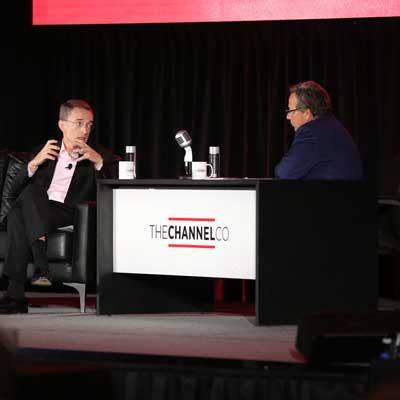
Who else is on the list?
We also compete with Red Hat, but even there NSX will support OpenShift environments, most of [Red Hat Enterprise Linux] runs on VMware, so they work with us closely ... almost everybody is co-opetition even as we compete on individual products. Other people like MobileIron and Citrix, we're just pulling away from them. In the mobility and VDI space we're really gaining momentum.
Our job, and I'll say this is one of the channel partners' jobs as well, is even where we compete, is to find ways to show up together in a complementary way. Customers don't like their technology providers fighting with each other. They want us to come together, deliver solutions together, and my promise to everybody here in the audience is if you need us to partner with anybody, we will. We're going to find a way to make those things work together, even if we're competing with each other. [audience applause] Thank you. That even includes people like Oracle. That's very serious. We're going to find a way to make it work for our customers independent of any of these competitive dynamics.
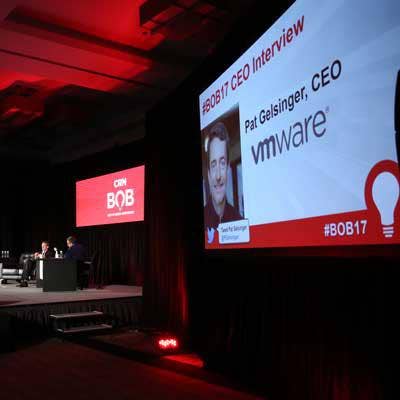
Talk more about the PKS partnership. What are you doing there?
It's the VMware Pivotal Container Service, bringing together the best of containers, the best of Kubernetes, the best of lifecycle management with Bosh from Pivotal. Combine that with NSX-VSphere environments to make those two worlds seamless because now we can bring DevOps to infrastructure operations in a seamless and complete way. So that's our pursuit. It's getting great response from the marketplace overall. Some might choose other paths but we think we present a value proposition that clearly says this is the right way we want to do enterprise container deployments and we'll run that capability on top of IBM Softlayer, on top of VMware Cloud on AWS, so you have a seamless pathway for your containerized and non-containerized applications to the public cloud. We're also building the connective layer into the Google container engine as well, GKE, so that will be a seamless path.
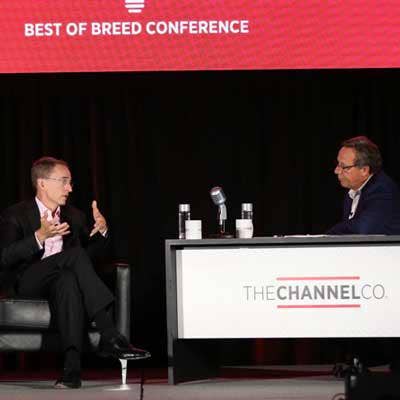
Who controls PKS? It's Pivotal, it's you and it's Google. Who's the controlling force there?
It's a joint product that we're delivering with pivotal. It will be one product. You can get from Pivotal, you can get it from VMware, it will be one solution that will be offered. VMware will bundle other products with it that we'll sell as part of our solution as well ... The other aspect is Kubernetes, so to some degree what's in the product will get decided by CNCF, because we're governed by the Cloud Native Computing Foundation, which is the controlling body for the Kubernetes standard as well. So to some degree we have to go influence the Kubernetes standards organization on what goes into the product. We control what we do in NSX, clearly Pivotal controls BOSH, but even there, BOSH is now part of the Cloud Foundry Foundation, so to some degree we have to influence the standards bodies we helped create in this to follow that direction. It also means other people in the industry can influence that as well and participate in those bodies to help drive the road map and the future. That's sort of the blessing and the curse of open source.
So who's the real controlling force here?
VMware and Pivotal. It's a 50-50 partnership but I'll just work harder in that 50-50 partnership.
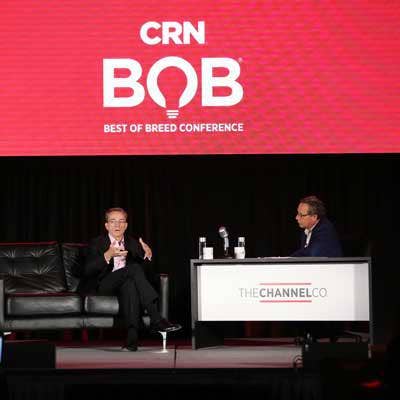
It's been a year since the Dell EMC merger. Your stock price and valuation are up. Why are we seeing this resurgence of people saying VMware's a hot company?
Our strategy is firmly resonating. We're not part of the past; we're part of the future. The AWS announcement. The overall cloud strategy. NSX and vSAN are taking off. There was cloud euphoria. Everything's going to the cloud. They've got these applications. It's going to be a hybrid world. Secondly, we're executing and Dell is executing with and for us. We're surpassing our business goals for synergies, our sales machine and our channel partners who have performed for us in an incredible way. This year, we're well over 20 percent through the channel – a very substantial growth rate. We're just getting it done. Third, it's a good market if you're on the right side of tech transitions because tech is breaking out of tech. People need to figure out how technology becomes more integral to every area of their business. For the companies positioned on the right side of these technology trends, we're going to have an accelerating market for the next five, maybe 10 years.
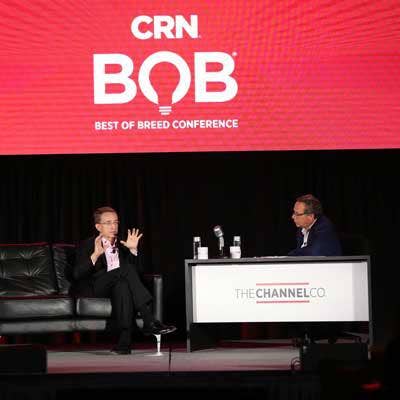
You got out of the public cloud market a while ago. What was the reason for that?
When we started on vCloud Air, there was clearly a set of assumptions on how fast the market would take off, how we could build those hybrid technologies that were going to occur. We didn't see a pathway where we could really partner with Amazon or Azure. Out of that came a rethinking of our strategy. The Amazon partnership emerged in a big way. The IBM partnership emerged in a big way. They committed to co-engineer this solution that allows us to offer customers the seamless ability to move to the cloud. You now have an infinitely-scalable, geographically available vCenter cluster. It can be as big as you want, as little as you want, wherever you want it in the world. That is compelling. And you don't have to re-platform your applications.
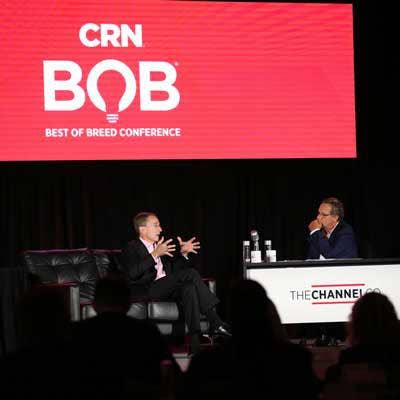
What other factors influenced your revamped strategy?
Our ability to partner broadly. Our VMware Cloud Provider Program is 4,400 strong. We're at six quarters of growth over 30 percent in that business. We harvested the intellectual property into these hybrid cloud services we just announced, and we found a great partner in OVH. While it wasn't the pathway we expected when we started that journey four years ago, every aspect of our cloud strategy is performing well. We also just announced our cloud services, which operate across any cloud and include cost insight, discovery tools, network insights and NSX-as-a-service now on Amazon and Azure. Each one of those give people the tools that enable cloud freedom and control, and do that through a consistent infrastructure and operation level.
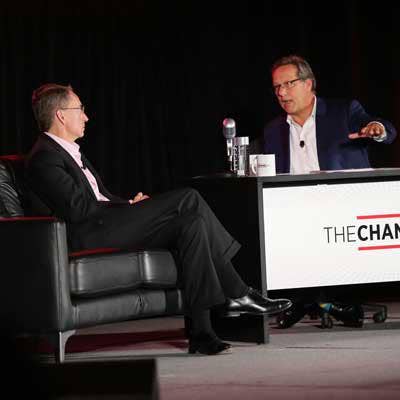
What was it like going through that transition and what can partners learn from it?
Humorously, we had our internal management 'last and final decision meeting' on the Amazon partnership seven times. We had final approval meetings with the board on three different occasions. Reforming your strategy is hard. You're going to scrutinize it and make tough decisions. (One was) moving to everything as a perpetual business and now committing to accelerate. Subscriptions are going to be 20 percent of our revenue by 2020. Rather than a $1 million ELA, you get a $20,000 starter pack and you have to grow the customer. You don't get all the cash up front. You have to expand their use cases. You carry the operational risk rather than the customer. So many aspects of the subscription business are different. And you got to do it.
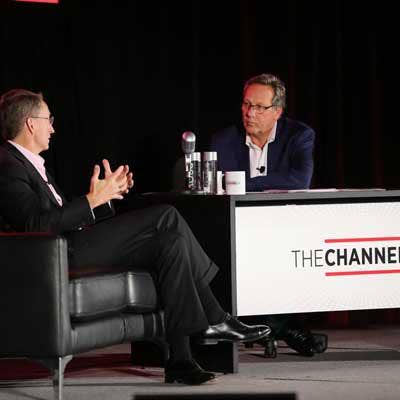
How did you get VMware to change?
You have to figure out how to make that transition deeply committed to at the highest levels of your company. Everything today is conspiring against you making those transitions. You are perfectly designed to do the business you have today, not the business you need tomorrow. You have to take very defined steps to transition the business, commit to those services and make sure they're resourced properly. You have to make sure you have all the IT, operational and business processes systems in place. We're not done, by any means. But we're well into that journey.
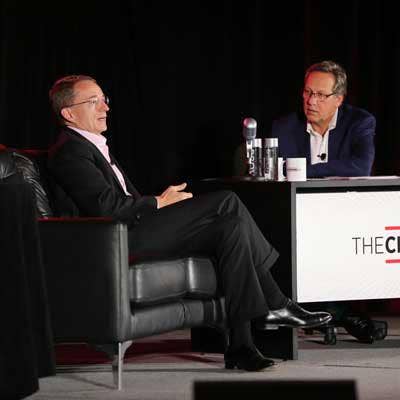
Did you get the team together and say we've got a big problem here?
We had our cloud strategy meetings. We did them almost every week for four months. About a dozen people. Five or six of our direct staff, and then a handful of our content experts. We also had a consultant do some work for us to really understand the market better. We spent a few bucks there. Spent a lot of time with Michael (Dell), with board members. We engaged with IBM, Amazon, Microsoft and Google. We were exploring. We had four parallel partnership conversations going on before we settled it. It was a big deal, an elaborate process and we got to a good answer.
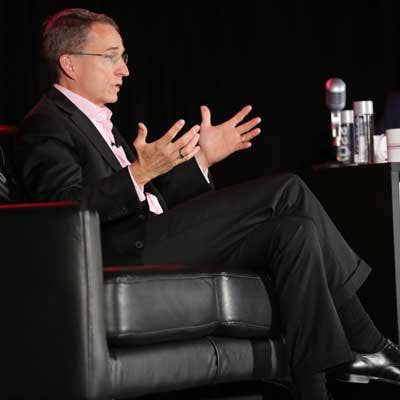
How do you get around your own head and drive that public cloud isn't going away?
You got to get around it. You got to get past it. You can't assume your customers are not going to go down the Amazon or Azure route. It's happening. It's already well underway. It's like we're in the fiber channel business and we're pretending that ethernet won't exist. Guess what, it happened. Or we're in the wire telephony business, and think the wireless business is really never going to take off. You got to figure out how you're going to make that hard-core transition. Amazon, Azure, Google. These cloud infrastructures are now at scale. They are part of the critical infrastructure your customers are going to take advantage of. You have to figure out how to embrace that as part of your go-forward strategy.
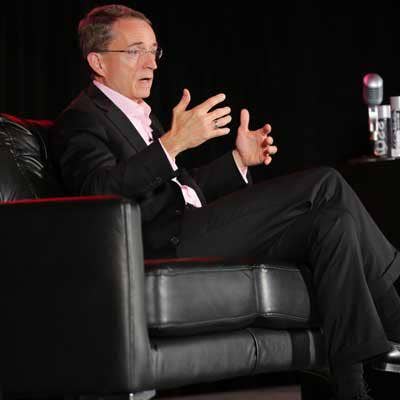
How did the industry react to VMware's shift in strategy?
As the Amazon partnership was being rumored, and the first rumor article came out, the first call I got was from the then-CEO of Rackspace, Taylor Rhodes. He said, 'I want to be your first partner for VMware Cloud on AWS.' I was shocked. He said, 'We've decided they're part of the infrastructure future for our customers. We've already started reselling Amazon. We have a huge practice on VMware and I want to be the lead partner of putting those two things together.' I would have never expected that. I expected Rackspace primarily viewed Amazon through the competitive lens, but that was the first phone call. Every one of you has to figure out how you embrace that as part of your future. How do I add value on top of it? Services next to it? Be effective selling it? Maybe the marketplace is competitive in some aspects. Figure out how to get over it.
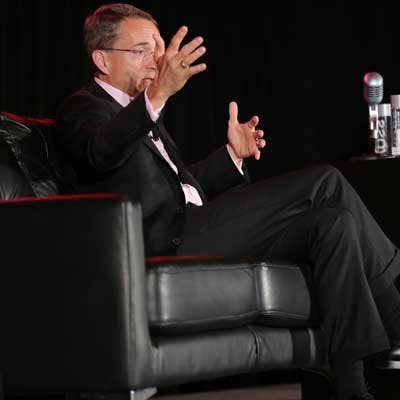
When is the channel going to be able to sell VMware Cloud on AWS, and how are they going to be paid?
We haven't announced the program yet. We will early next year. We will reward and participate with our partners largely as we have in the past. Obviously as a subscription service, it will be different. We know we have to do that to work with you. Largely, you should treat it as yet another product coming through VMware. We're going to make sure our partners are well-enabled and well-compensated for delivering it to our customers. There's the VMware portion, and we're also selling through the Amazon hosting as part of it. We'll have different margin structures.
Are you talking to the advisory board about how to do that?
We absolutely will. Early next year, so we're getting into that shortly. We'll make sure to do that. Rolling out in the US and then we'll expand to global partners next year.
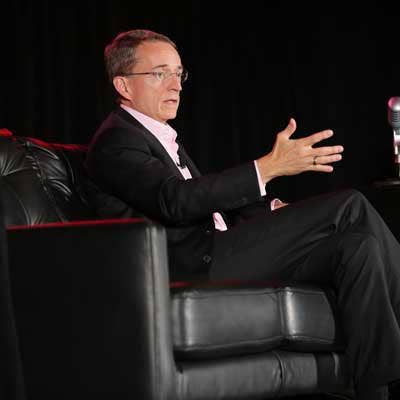
Your partnerships are each a little bit different. How does the channel play with you?
We will be presenting a set of cloud services that you can sell and make part of your offerings to your customers. They will come in three different forms. Things like VWware Cloud on AWS, a full hosting service offering that we'll enable. Second will be a set of VMware Cloud partners we'll be enabling like IBM, OVH, etc. And then a set of services we'll offer that are essentially our SaaS services. That's the VMware network insights, cost discovery and NSX-as-a-service. That portfolio of services will get richer and richer. We announced the first six of them. By this time next year, we'll probably double or triple that set of services. We'll be making all of those available through the normal channel programs that we offer.
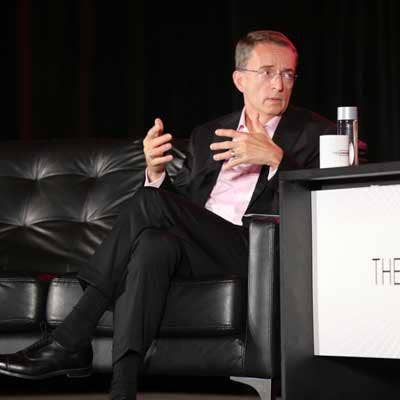
Do you anticipate any challenges when you roll out those services?
I'm sure we'll go through some pains, because they're subscription. How do we reward you for early customers and growing customers? We'll certainly have some good feedback processes with you to get through that, but our commitment is for you to have a thriving business selling those services in addition to the products you do now. Over the next year to 18 months, I expect some of our customers will flip over entirely to be subscription-based. They'll say, my biggest relationship now is around subscription. I want all of my stuff subscription. Over the next 12 months, we're going to figure out how that process is going to work. I expect 24 months from now that's going to be a mainstream activity we'll do with you.
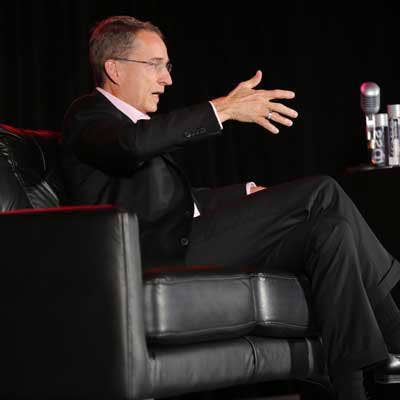
Do you see a point in time where public cloud is dominant way to deliver computing power?
Last year at VMworld, I gave a definite, data-centric view of how we saw that transition occurring from public to hybrid, SaaS vs. IaaS and Paas. We just refreshed that coming up on VM World, and it hasn't changed a lot. The crossover point, when it's 50-50 public and private, our estimate is sometime in 2025-26 range. We still have a long way to go. Furthermore, when we hit 50-50, half of what's public is SaaS, and half is PaaS. We fully expect that the hybrid world continues for a long time. Decades in the future.
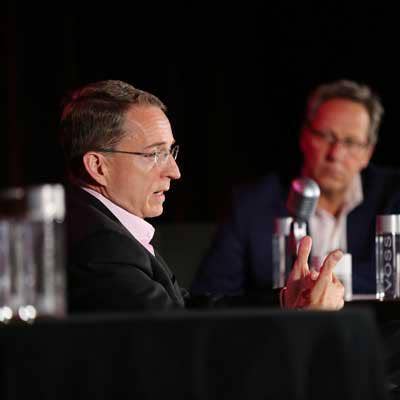
Will the edge influence how that public/private balance evolves?
There's been this shift from centralized to decentralized – mainframe to client server to Internet to cloud. We believe the edge and IoT will be a force toward decentralization where you'll start seeing more resources emerging at the edge. The factory automation system will be in the factory. Data you're collecting for your oil rigs will be on the oil rig. The central control systems for HVACs will in the building. All of these use cases will drive more of a hybrid or edge-based environment in the future… Five years from now, it'll start to kick in in a much bigger way.
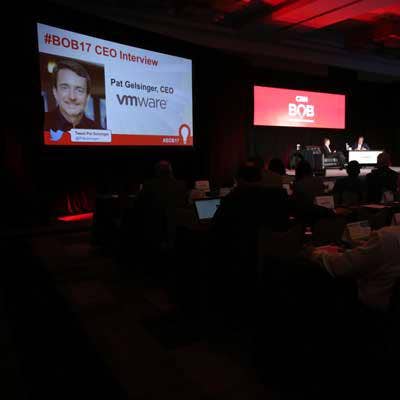
Do you think the edge forces you to go hybrid?
Absolutely. Do you want your self-driving car automation system to do the round trip to the public cloud for an extra hundred milliseconds? Of course not. These use cases are clearly latency and data bandwidth-centric, which will require localization or locality.
That seems to speak well to a partner that is selling infrastructure.
Absolutely. We see this as a very positive trend. You need to figure out both. You are going to continue to deliver meaningful infrastructure for decades to come. But you also need to say, how do I now connect and deliver cloud-based services? Separate that – cloud vs. on-premise – from SaaS or subscription, because your customers will want more subscription offerings from you, as well. Even when they're on-premise.
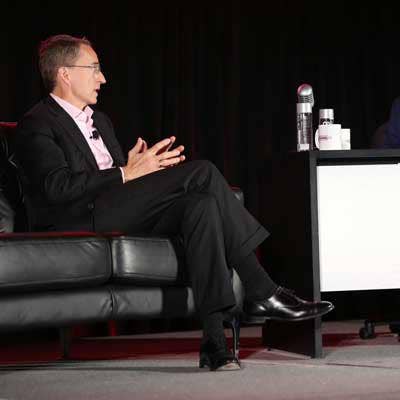
What other skill sets should partners develop now?
Our No. 1 priority for the last couple of years is NSX. Gain software networking skills. How you tether things together is going to play a critical role for how you enable these next-generation multi-cloud use cases, edge-based use cases and branch transformation. How those edge or gateway devices that are IoT-connected, the networking aspects become more important. We see huge potential in that space. That was, is and will continue to be the VMware No. 1 priority. Get more in the virtual networking space and you're going to see us continue to expand what we do there – add more capabilities, acquire more companies.
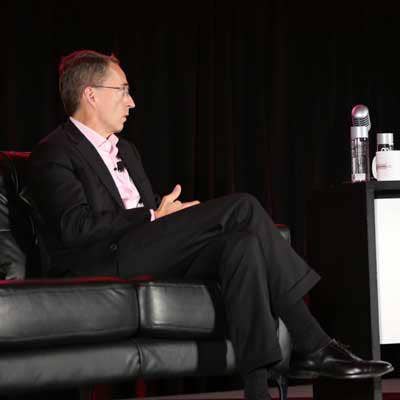
How pervasive will smart devices be in the near future?
When you think about an IoT world five years from now, we will have three to four times as many machine-connected smart devices as we have human-connected smart devices. That's just a mind-boggling number. You'll have about 10 billion humans carrying a smart phone, and you'll have 25-30 billion smart machines. The only way you'll deal with that is through automation. More intelligent analytics and data repositories. Most of those machine use cases, the data will not land in the public cloud. It will land in private embodiments with public cloud services helping analyze that.
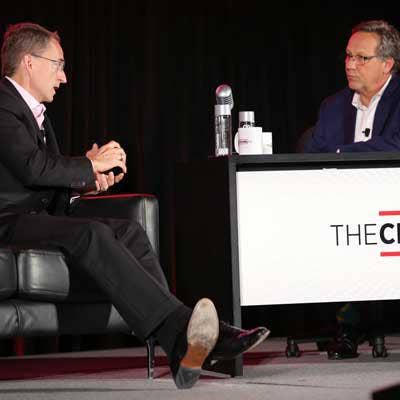
So partners should really be thinking about IoT at this point?
We see many of our end-user computing partners becoming IoT partners. What's the difference between a human-connected device and machine-connected device for being able to manage and secure? There's not much. Many of those same skills are going to be associated in that space. We see huge potential in that space.
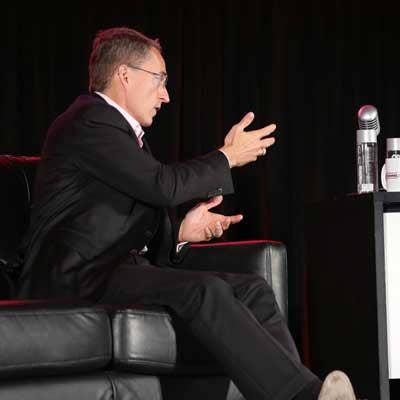
How does VMware look at security?
Our agenda here is we said, 'Security, as an industry, we have failed our customers because they're spending more on security and the cost of breaches is increasing faster than their spend on security. So they're spending more and their falling further behind. That sounds like failure to me. We want to do three things: We want to integrate more of the base security capabilities directly into the products that we build so it becomes very simple extensions. We've taken things like disk encryption, hey VSAN just does that as a feature now. Network segmentation: NSX just does it as a feature. Multi-factor authentication: AirWatch does that as a capability and with AppDefense, we're now going to be eliminating many of the complexities of things like whitelisting, agents that you have to put into applications and environments because the VM will do that in a complete, integrated way, so bake in more of those security capabilities. Secondly then, work with the core foundational platforms, the Check Points, Palo Altos, Symantecs of the industry to do the integration so you have more complete solutions, and then finally cyber hygiene.
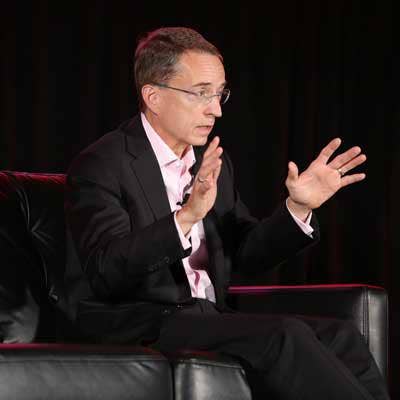
What's the impact to the end user of integrating those types of security features?
As a result of that you make it really easy to do the basic things well. It's like winning a sports championship: practice the basics and here, if you do the basics consistently and well, like multi-factor authentication, encryption, segmentation, lease privilege, deployment patch and software upgrades. If you do those things really well, you're not going to be Sony, Target, [U.S. Office of Personnel Management], any of those. You would not have failed any of those breaches.
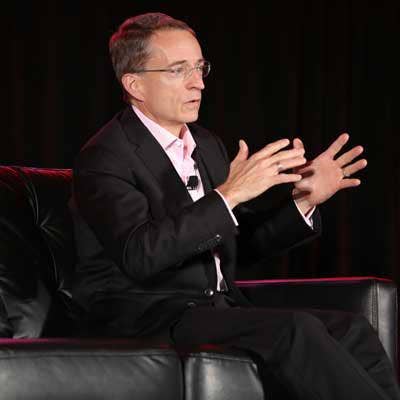
How does AppDefense come into play?
AppDefense is probably the coolest new technology we've done in a while. I think this is really game-changing. We're going to drive a very high-velocity sales motion, and everybody who is VSphere, we're going to say, 'Add AppDefense to it,' because it's just that compelling. Now the VM itself says, 'this is good behavior, and the moment I do something different then good, take action based on it. Stop the VM, turn on full-packet capture, put me into a privileged microsegment, notify the SOC, whatever it might be. We ran Wannacry and Petya [ransomware] through AppDefense, and it was like big red lights started flashing immediately ... we didn't even need any smart AI or machine learning. This was basic stuff. But we can now immediately detect it and make an automated response based on it.
What's the opportunity for the channel around AppDefense?
I think AppDefense will be huge for us and for the partners. Now you can sell VSphere and a security add-on that is very powerful. For us it's a very simple way to add on to what we're already doing for a very high-value thing to your customers, so I think this is a great one.
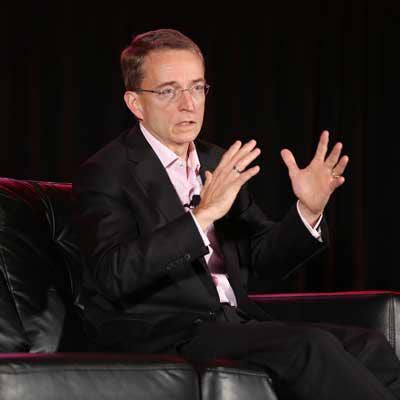
What was it like working at Intel with former CEO Andy Grove? Has he influenced the way you approach the market?
Andy was a personal mentor and friend for 35 years. When he passed away in March of last year it was a very sad day, sad week for me. Mentoring with Andy Grove was like going to the dentist and not getting Novocain. He was tough, he was hard. I remember one time, I gave what was probably one of the three most important strategy presentations ever done at Intel, and I had just finished with one of them (It was the multi-core strategy. When we moved from a single core, single-threaded machine I drove that strategy for the company). And got done, and it was the culmination of six months of work, and it's like going to your dad and looking for approval, give me your blessing. And he said to me, "You didn't give me a marketing plan yet." I finished a seminal restructuring of the entire company and that's all he said. I worked for him for 30 years and he complemented me only four times. I have them written down and notarized! But, he made you better ... I could tell Andy stories for weeks.
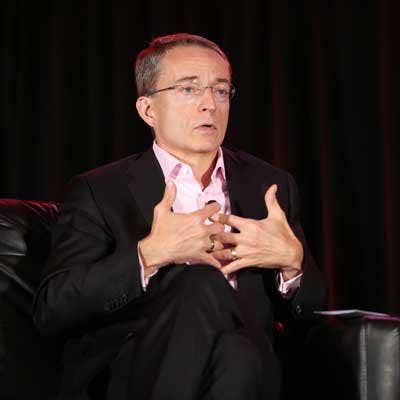
How has your work with Andy impacted your management style at VMware?
Andy was brutal, and we try to be a nicer company than that, but he was data-driven, he was strategic, and I certainly try to bring that to VMware. We're going to be data-driven, we're going to be strategic, we're going to talk about the facts, we're going to really crawl into it. When you walk into a room with me, I want your data and I want your point of view, if you don't have those two things don't come into my office until you get them. To me that was the magic of Andy.
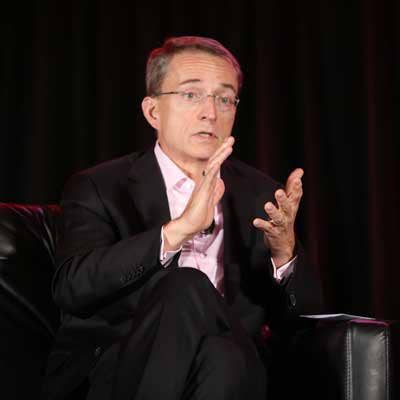
I know you just got back from Africa, you're very involved with the church and charity work. Does that influence your management style as well?
On the personal size I've been deeply committed to my faith, to the philanthropies. I'm excited about what we're doing as a company, but if you want me to get really excited, let me tell you about some of the philanthropies that we're working with. We just got back from a trip to Africa. We've been associated with some work there for the last 15 years. The schools we've helped to start and operate there, we now have 15,000 kids in schools in the slums of Nairobi that are now being educated with two meals a day, six days per week. The mortality rates for our kids droped from 30 percent, with one or both parents having AIDS, to now at less than 5 percent. We just had our second graduating class, with 40 percent of them now at university. This is just life-changing micro-finance, health care clinics, church planting, with just stunning results.
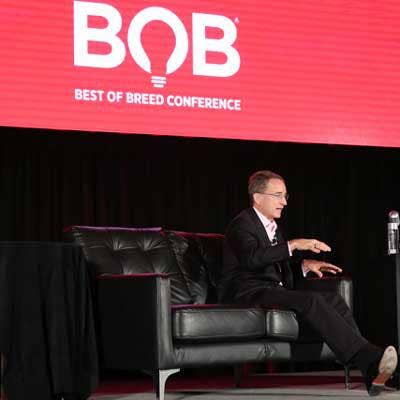
How hard is that compared to running VMware? To pull that off is not an easy task.
You've got to work with volunteers, and you can't fire volunteers. I mean, you can, but it's a lot harder. But a lot of the skills are the same. Most charities are poorly run because they don't run by good business principles. We're going to measure outcomes, and if you can't do the job I'm either going to get you to be able to do the job or I need to replace you because it's the right thing. Most charities, in my sense, are pretty crappy because they don't run by good business principles. When you then shift to the VMware side, one of the things I'm very proud of is the values of VMware. We talk about them all the time, we take steps to demonstrate them all the time. We call them our EPIC2 values [execution, passion, integrity, customers and community]. When I'm done as the CEO, I hope the values of the company last decades beyond my leadership.
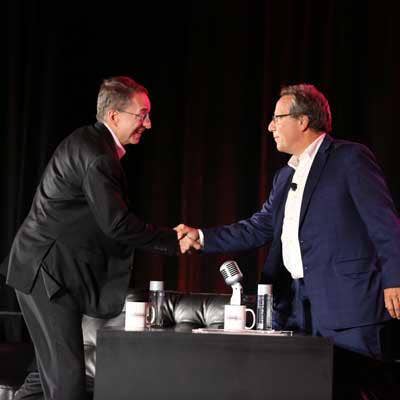
What's an example of VMware employees demonstrating those values that you're proud of?
Our Austin team, where we have a big call center, took over 100 people to rebuild in Houston. They took Thursday and Friday off and spent the weekend rebuilding. I just said, 'who's manning the phones?' They said, 'Don't worry, Pat, we've got it covered.' None of the executive team approved it, they just did it. That's what values mean, these things are happening if you walk into one of our buildings. The further you get from headquarters the more important the values are ... To me it's just thrilling to see those things spontaneously occur.